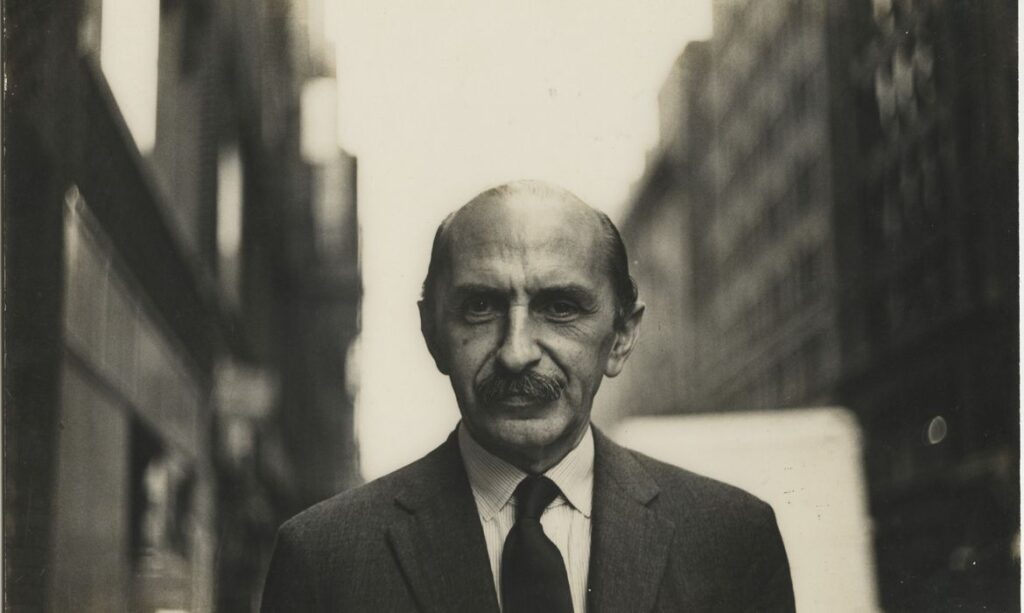Discover the story behind the relaunch of Lúcio Costa's autobiography by Editora 34
Editora 34 recently announced the relaunch of Lúcio Costa's autobiography, “Registro de uma experience”, a work that documents the life and work of the most influential architect of Brazilian modernism. In this article, we will explore the story behind the relaunch of this important work and examine the life of Lúcio Costa and his contributions to Brazilian architecture.
Who was Lúcio Costa?
Lúcio Costa was a Brazilian architect born in Toulon, France, on February 27, 1902, and died on June 13, 1998, in Rio de Janeiro. He was the son of Joaquim Ribeiro da Costa, an admiral.
Among his most important contributions to architecture In Brazil, highlights include the Pilot Plan project for Brasília, at the time the new capital of Brazil, and the coordination of the construction of the Ministry of Education and Health building in Rio de Janeiro, both projects developed in partnership with architect Oscar Niemeyer.
Lucio Costa is widely considered to be one of the most important architects in Brazilian history, having played a fundamental role in the development of Brazilian modernism.
Relaunch of “Record of an experience”
“Record of an experience” was originally published in 1979, but this new edition by Editora 34 includes an unprecedented preface written by architect Guilherme Wisnik, as well as a series of photographs and illustrations. However, it maintains the original graphic design. The work is a collection of Lúcio Costa's writings, including diaries, memories, poems and essays on his modernist ideas, which document his personal and professional life.
This relaunch is an opportunity for architects, students and architecture enthusiasts to learn more about the life and work of Lúcio Costa, as well as discover more about how important modern architecture is in Brazil.
O book is written by Lucio Costa, with an interview by Mario César Carvalho, editing by Milton Ohata, presentation by Maria Elisa Costa and afterword by Sophia da Silva Telles.
Lúcio Costa's legacy
Lúcio Costa's legacy in Brazilian architecture is undeniable. He was an advocate of modernism in the country, promoting a functionalist approach to architecture that valued the integration of form and function. His work in Brasília, which won the competition, is, in particular, considered one of the greatest achievements of modern Brazilian architecture. However, there are many other important modern works by him.
Furthermore, Lúcio Costa was instrumental in founding the National School of Fine Arts, where he taught for many years, helping to shape a new generation of Brazilian architects and change the curriculum of the architecture course at the time.
Conclusion
In short, the relaunch of “Record of a Experience” is an excellent opportunity to explore the life and work of one of the most important architects in Brazil. The work documents the architect's personal and professional history and shows Lucio Costa's opinions on various subjects, offering a unique insight into the development of modern architecture in the country. If you are an architecture student, an architect or an architecture enthusiast, this is a work that you should not miss reading.

Book summary
“Record of an Experience” is an autobiographical work by the prominent Brazilian architect and urban planner, Lúcio Costa, published posthumously in 1995. The book is composed of a series of essays, reminiscences and reflections about the author’s life and work, considered one of the main references in the context of modern architecture in Brazil.
Throughout the work, Lúcio Costa exposes his professional career and more intimate aspects of his existence, such as his memories of childhood and adolescence, his coexistence with artists and intellectuals of the time and his impressions of Brazilian society. The author reports on his experiences and the difficulties he faced along his journey, such as the criticism received for his avant-garde vision of architecture and urbanism.
In his work, Lúcio Costa defends the importance of integration between the arts and the need to seek innovative and efficient solutions to urban dilemmas. The author argues that architecture should not be seen just as a technical activity, but as a cultural and social expression that should help improve people's quality of life.
“Records of an Experience” presents itself as essential reading for those who wish to understand the trajectory and legacy of Lúcio Costa, one of the main architects and urban planners in Brazil. The book is a valuable source of information and reflections on modern architecture in the country and on the urban problems that Brazilian society still faces.
If you want the text to print, click here.
What texts are included in Record of an Experience?
The texts by Lucio Costa that are in the book Registro de uma experience are, in order:
- ENBA 1917-22
- Memory of Ismael Nery
- Diamond
- Academic eclecticism, 1922-28
- 1920s (Post-war alienation. FASHION
- Letters, 1926-27
- Mary Houston, Travel Log
- Flag
- Correias, Leleta, 1929-31
- Fábio Carneiro de Mendonça country house, 1930
- Casa EG Fontes, 1930 (Last manifestation of eclectic-academic meaning)
- Casa EG Fontes, 1930 (First proposition with a contemporary meaning)
- Itamaraty
- ENBA 1930-31, Teaching situation at the School of Fine Arts
- Hall 31
- Gregori Warchavchik
- Gamboa, Proletarian apartments, 1932
- Seasonal atmosphere, Lunch on Urca hill
- Casa Schwartz, 1932, Rua Raul Pompeia (no longer exists)
- Charlotte Perriand
- Awareness, 1930s
- ugly word
- "Eve?"
- Finding, 1932, more than half a century ago, therefore
- Chômage, 1932-36
- Ownerless houses
- 1
- 2
- 3
- Monlevade (1934, project rejected)
- Forgotten Projects, 1930s
- Casa Carmem Santos
- Maria Dionesia House
- Álvaro Osório de Almeida House
- Casa Genival London
- Coelho Duarte Farm
- Implementation studies (Casa Hamann, Saint Roman street)
- Reasons for the new architecture, 1934
- Interests to the student
- Interests to the architect
- Ministry of Education and Health, 1936
- Postscript (The origin of everything/Invitation letter from Minister Capanema)
- Clarification (to the Minister of Finance, at the request of Minister Capanema)
- Personal account, 1975
- Mise au point, 1949
- Alert, 1986 (Letter to Minister Celso Furtado)
- Presence of Le Corbusier
- A lot of construction, some architecture and a miracle, 1951 (Testimony from a Rio architect)
- University City, 1936-37
- Brazil Pavilion, 1939 New York World's Fair (Collaboration and worldwide release by Oscar Niemeyer)
- Homemade Letter
- Oscar Niemeyer, Preface to the book by Stamo Papadaki, 1950
- Oscar 50 years, 1957
- Testimony, 1948
- Disencounter, 1953
- Pedregulho, AFfonso Eduardo Reidy
- Guinle Park, 1940s
- Park Hotel, Friborg, 1940s
- Casa Hungary Machado
- Casa Saavedra, 1940s
- Heloísa's house
- Brasília House, 1960
- Delfim Moreira 1212, penthouse, 1963
- Caio Mário, 200, 1982
- Caio Mário, 55, 1988
- Barreirinha, Amazonas, 1978
- Student House, Cité Universitaire, Paris, 1952, Letter to Rodrigo
- Bioclimatic architecture, 1983
- From Drawing, 1940
- Considerations on contemporary art, 1940s
- Formes et fonctions, 1967
- Art, normal manifestation of life, 1968
- The architect and contemporary society, 1952
- urbanism
- B rasília, the city I invented
- “Ingredients” of Brasília’s urban design
- Memoir Description of the Pilot Plan, 1957
- Salute to art critics, 1959
- The urban planner defends his city, 1967
- Monumental Axis
- Highway-Resindeicla Axis
- Road Platform, On-site interview, 1984, November
- Rest with you
- Souvenir of the Seminar, Senate, Brasília, 1974
- Rectifications, 1970s and 80s
- Key Considerations
- Brasília 1957-85, From the pilot plan to the “Plano Piloto”, Confrontation
- Fontenelle, 1984
- Brasilia revisited, 1987
- Economic Quadras, 1985
- Alagados, 1972
- The problem of public housing
- Semi-detached houses
- C&S Urban Planning Ltda. , 1987
- Chapada dos Guimarães, 1978
- Barra, 1969
- Future Metropolitan Center, Block implementation scheme
- Personal record, 1974
- Posture
- Seem
- Nigeria, 1976
- New Urban Hub, São Luís
- Casablanca, 1980-81, “Corniche”
- Rio De Janeiro, 1989
- Architectural Map of Rio De Janeiro
- Traffic in the 1940s, Menezes Cortes
- Rio, difficult city, 1970s
- Propositions, 1974
- Political-ideological intermezzo, Unlinking, Arica, 1961
- Option, recommendations and message
- Letter to the Americans, On board of SS “Rio Tunuyan”, 1961
- The day before, Pessimistic allegory, 1961
- Letter that was not
- De Gaulle – Gorbachev, 1990
- Waste, 1991
- The new Scientific and Technological Humanism, 1961
- Museum of Science and Technology, 1970s
- Scientific and technological development as part of nature, Theory of Convergent Resultants
- The Believer and the one who disbelieves, Message to SS the Pope, Alceu Amoroso Lima
- Elucidation, From “no being” – nec entem (pas un être) – to being
- XIII Milan Triennale, 1961, “Free time”, Brazilian Pavilion: RIPOSATEVI
- Rampas da Glória, 1960s, Collaboration Emilio Gianelli
- Eucharistic Congress, 1955, Original risk
- Estácio de Sá
- Jockey Club of Brazil
- Banco Aliança
- Snapshot, 1990, The 1980s in architecture
- Postmodern, Misconception
- C Catacumba Park, 1979
- Virzi, Proposal for listing, 1970
- Protest, Sugar Loaf
- Roberto Burle AMrx
- Raymundo de Castro Maya
- Fernando Valentim
- Alcides da Rocha Miranda
- Two houses – Zanine
- JFL – Lelé, 1985
- LC na Repartição, Carlos Drummond de Andrade, 1982
- SPHAN, National Historical and Artistic Heritage Service, Vocation, 1970
- Rodrigo and his times
- Conceptualization
- Western tradition
- Local tradition
- Introduction to a report, 1948
- Required documentation, 1938
- Portuguese-Brazilian furniture, 1939
- Gold Museum, Sabará
- Quinta do Tanque, Opinion, 1949
- Frei Bernando de São Bento, the 17th century architect of Rio de Janeiro, Remembrance of d. Clemente da Silva-Nigra
- The craft of silver
- The architecture of the Jesuits in Brazil, 1941
- The Seven Peoples of the Missions, Spanish Province, 1938
- Missions Museum
- Notes as you remember
- Emphasis
- Catas Altas do Mato Dentro
- Antônio Francisco Lisboa, known as Aleijadinho
- Precious document, 1968
- Lygia Martins Costa
- The Architecture of Antônio Francisco Lisboa as revealed in the original 1774 design for the Franciscan chapel of São João del-Rei
- Rodrigo's lesson
- Prophets or conspirators?
- Visits
- Ditchling
- Montreux
- Rott am Inn
- Epidaurus
- Chicago, The “Witch”
- Vervey-Corsier
- Saint-Tropez, Boutique Brésilienne
- Potpourri, Cape Cod, Moscow, Florence
- Marrakech, 1980
- Nungesser et Coli
- Ronchamp
- Premonition
- The wall, Regina Modesto Guimarães
- Roquebrune
- Le Mourillon
- Archaeological-sentimental appendix, The Wheelhouse
- In extremis, The unusual shuttlecock





